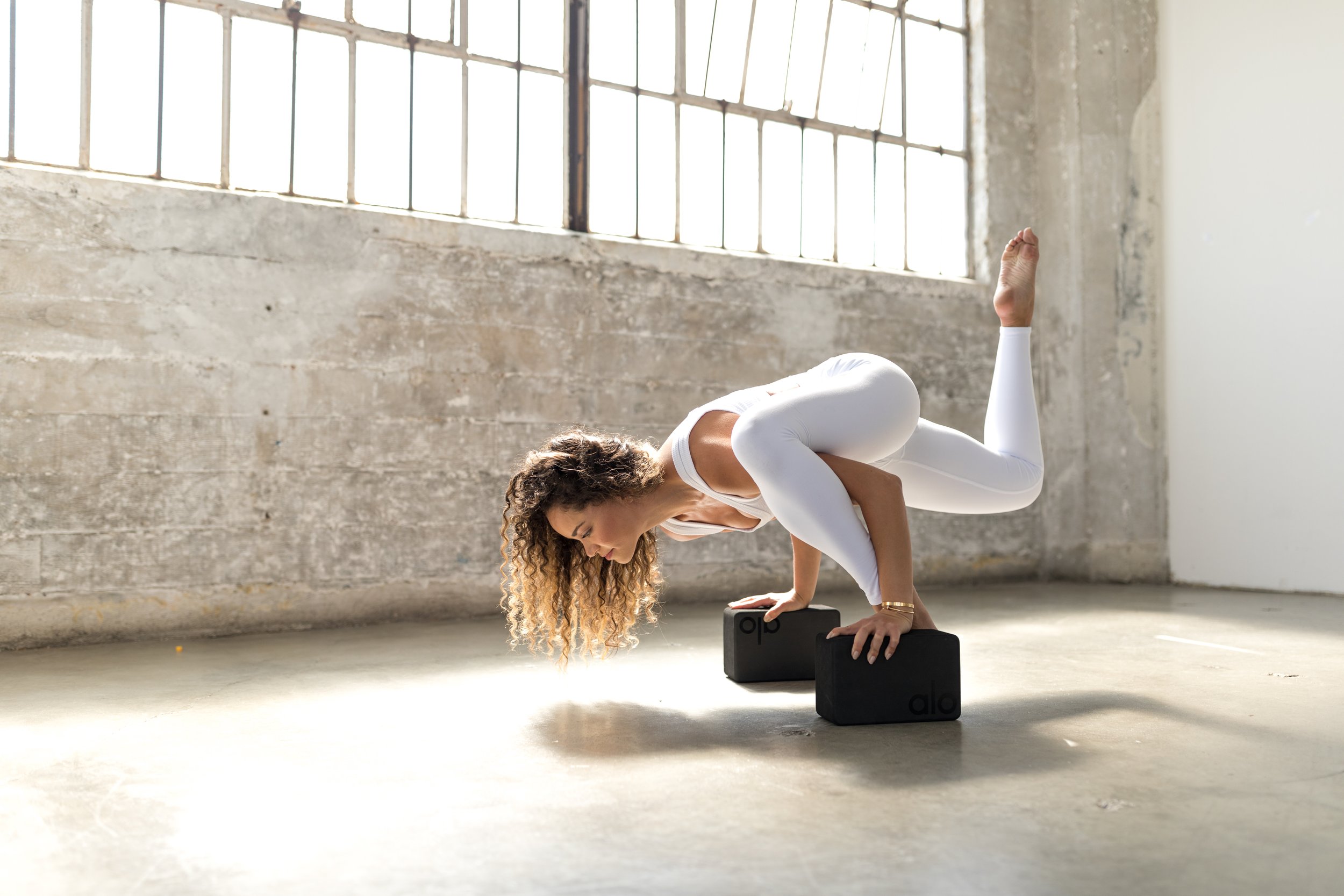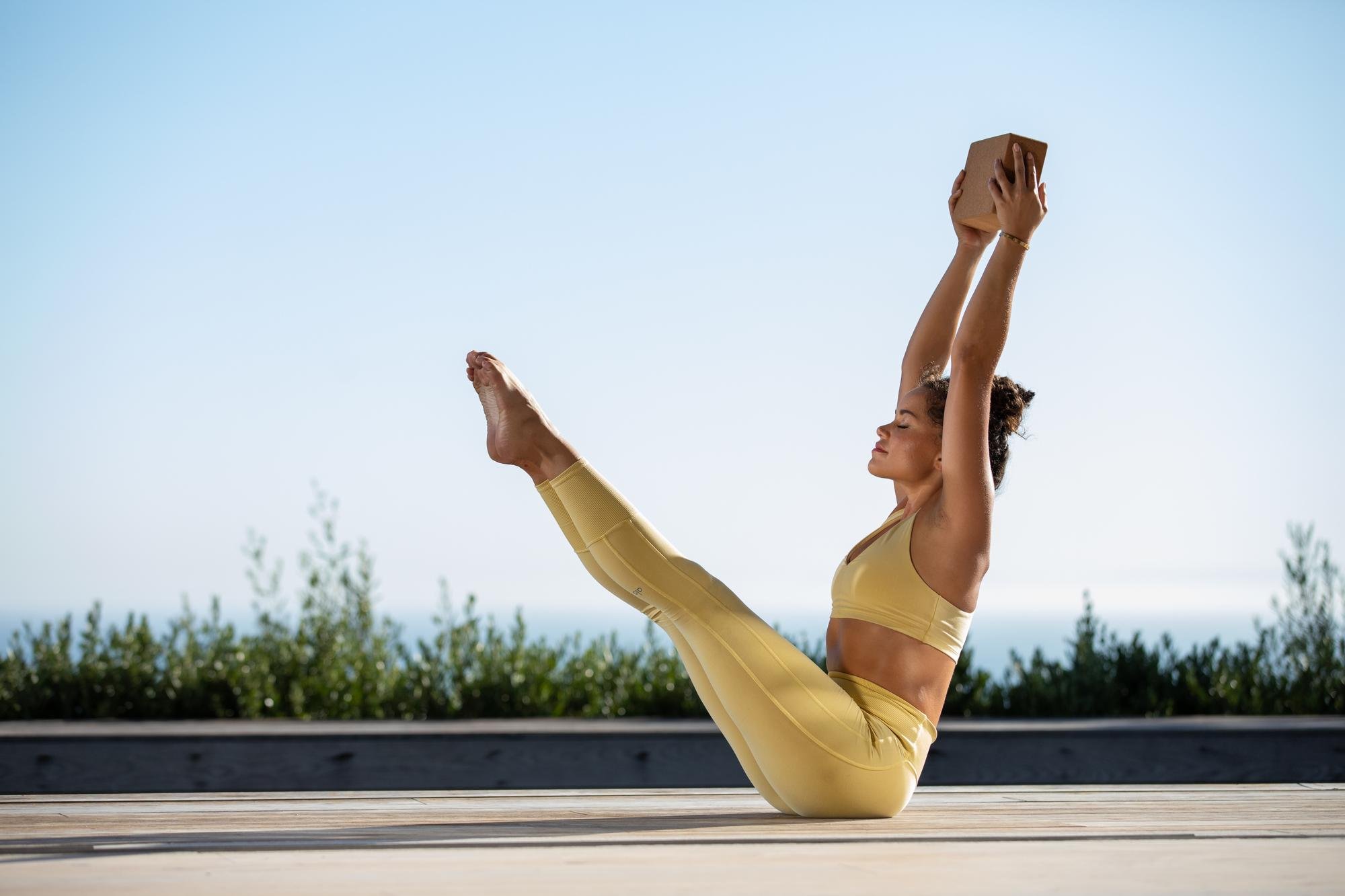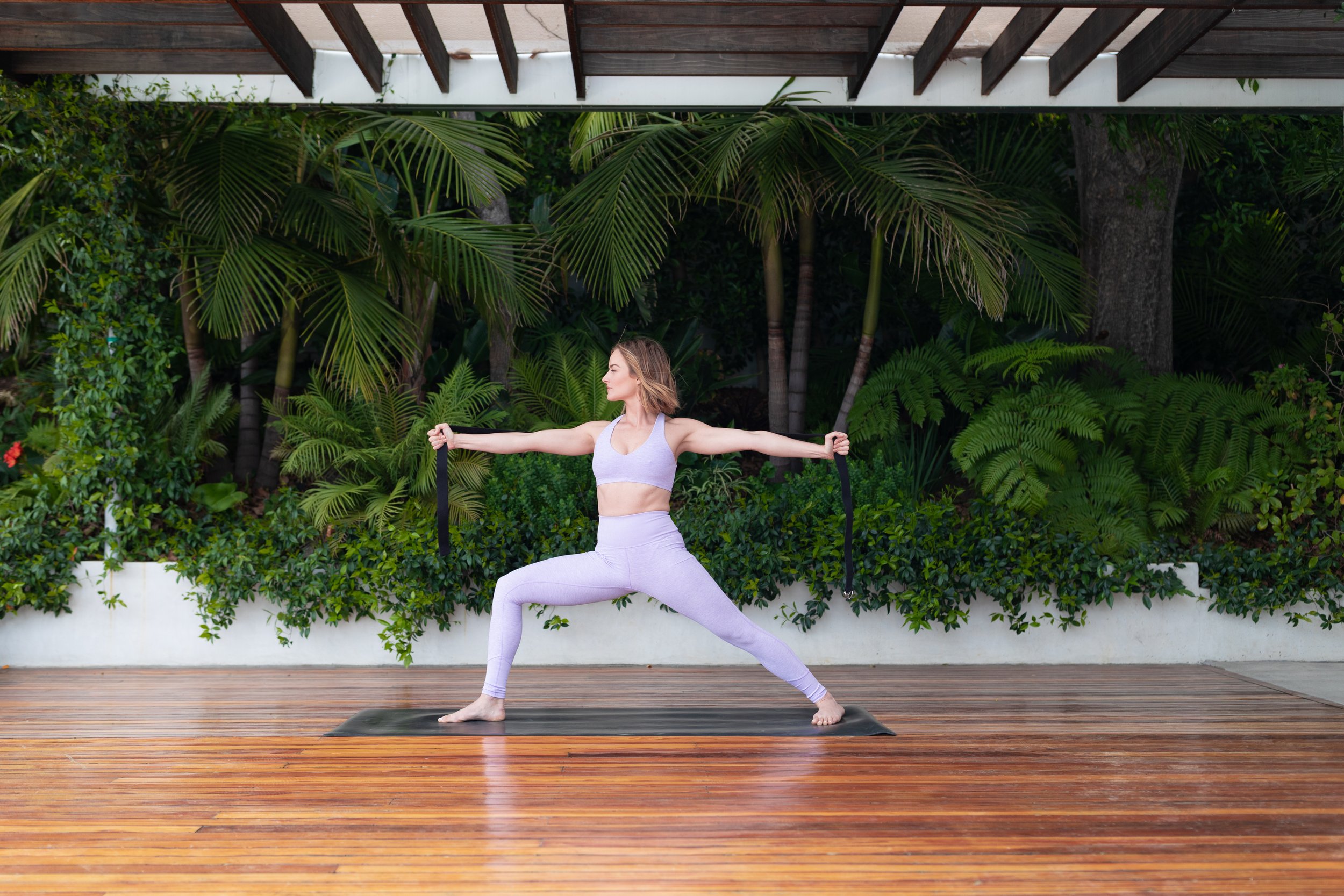What Equipment Do You Need for Alo Moves?
If you’re just getting started with Alo Moves, you might be wondering what equipment you need to get the most out of your workouts. The good news is that all you need to start sweating is your own body, because most Alo Moves workouts can be practiced without equipment even when the instructor uses them!
There are several classes where equipment is a central part of the class, though. The Props to Props class with Briohny Smyth, for example, is entirely focused on yoga props. You can get a better sense of what you might need to deepen your practice with our Yoga Props 101 guide.
We recommend having these props on hand if you want to take full advantage of your Alo Moves membership. Nearly all of them can be replaced by common household items, so check your closets to see what you have on hand.
Blocks
Yoga blocks are lightweight blocks used to modify poses in a variety of ways. In Vinyasa and other flowy yoga classes, they typically help bring the floor closer to you, whether it’s to help you balance or comfortably touch the ground. Blocks can also help support your body in Restorative Yoga or Yin Yoga classes, or be held between your legs in certain core workouts. Blocks are one of the most common yoga props, and typically provide three options for height: Set them flat on the ground for a small lift, on their sides for a moderate amount of extra height, or on their ends for the biggest assist.
Having a block can help open up all kinds of movements you didn’t know you were missing! Explore this prop in detail with the Yoga Block Play class with Alo Moves instructor Naya Rappaport. You’ll learn how to use a block to enhance common yoga poses so you can seamlessly integrate it into your practice.
Not sure which block to buy? We recommend Alo Yoga’s Uplifting Yoga Block — it’s super-sturdy and comes in eight different colors to match any vibe.
Straps
Along with blocks, a yoga prop you’ll find at most studios is a strap, which is basically what it sounds like: A long length of sturdy, durable material like nylon. Straps help you develop and maintain proper alignment and provide some extra length and stability to your arms, making binds more accessible and some holds more sturdy.
Straps can also expand the range of mobility in your practice. While most yoga classes lean heavily toward pushing movements, the Push and Pull class from Caley Alyssa incorporates pulling movements using a yoga strap.
While lots of things can be used as straps — like scarves, ties, or belts — the straps made for yoga can have some extra features. Alo Yoga’s Duality Yoga Strap doubles as a mat carrier!
Blanket
Blankets are a multi-use tool. They can keep your body warm during Savasana or any longer hold in a Yin or Restorative practice, provide support and alignment for many poses, and protect your knees from the hard floor. Folded up, they can swap in for a bolster or even occasionally a block.
Although they’re cozy, blankets aren’t all about naptime. They can also help with sliding movements in strength classes. The yoga-inspired strength class The Slide with Patrick Beach uses a blanket in a fiery circuit practice.
A yoga blanket in a studio tends to be made of natural fibers like cotton or wool, but you can substitute any blanket you have or even a bath or beach towel.
Sliders
Sliders decrease your friction with the floor so you can, true to their name, slide around. This can help activate your muscles and build core strength. They’re not the most common prop in Alo Moves classes, but they’re pivotal to a few great ones, like Barre Body Slide with Emily Sferra.
For a cheaper option, use towels folded under your arms or legs — or wear socks.
Bands
Resistance bands are a fitness powerhouse. They add more force for your muscles to work against and can help you target certain muscle groups more easily. Bands can also improve joint mobility, encourage proper alignment, and, for some strength training exercises, offer a lower-impact option without compromising results.
Plus: They’re lightweight, extremely portable, and tend to cost less than a lot of other fitness equipment.
If you’re looking for a boost in your booty-loving workouts, bands can be especially helpful. Give it a shot with Booty Work With Bands by Jacy Cunningham, a sweaty workout that fires up your backside in just 15 minutes.
Weights
Weights are, perhaps, the most iconic of all workout props, whether they’re dumbbells, kettlebells, or something a little bigger. For Alo Moves classes, when you see “weights,” it almost always means “dumbbells.”
What kind of weights you need depends on what kind of workouts you like and, most importantly, your own unique body. For barre classes and other cardio-heavy weight training, smaller dumbbells at relatively low weights (like two or three pounds) work well for most people. Some strength workouts, like circuit training, tend to go higher. You’re always going to want a weight you can use without injuring yourself.
The 21-Day Fit series with Mathew Forzaglia uses multiple sizes of dumbbells to work different muscle groups at a variety of impact levels. At the beginning of each class, he offers guidance on how to choose the appropriate weight according to your own body — for example, a light dumbbell is something that you’re able to curl.
Chair
Not everyone has room for a barre in their house — but chances are that you have a chair. A chair or stool can help you feel supported, whether you’re trying a new balance pose, starting a challenging barre workout, or just need some extra stability.
The advanced Total Body Endurance workout with Adrienne Rabena uses a stool for support so you can target different muscle groups with precision. The Work Flow series by Calvin Corzine is designed for the chair you’re already sitting in, with yoga classes you can do from your desk.
Wall
Trying to build your Handstand practice? Look no further than your closest wall. Whether you’re just starting your Handstand journey or trying out a more advanced inversion like Scorpion Pose, a wall can help support you while you build proper alignment and learn to safely get in and out of the pose. The Destination Handstand series with Melini Jesudason uses a wall to help you strengthen your Tuck, Straddle, And Pike Handstand technique before you’re ready to do it in the center of the room.
Walls are also incredible supportive props for restorative classes. Next time you’re in Savasana, try it with your legs up a wall.
Practice these classes and more for free with a 14-day trial to Alo Moves.










